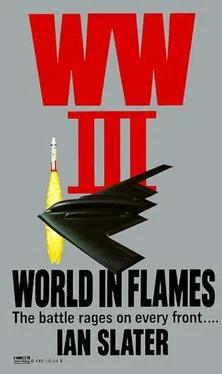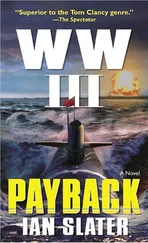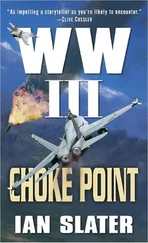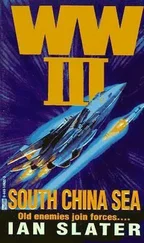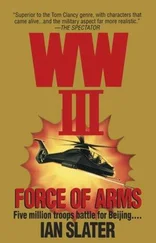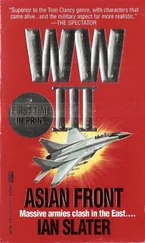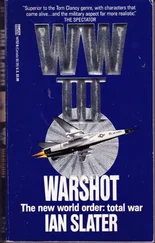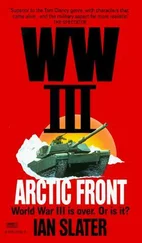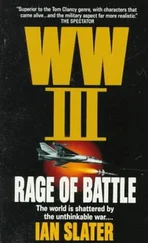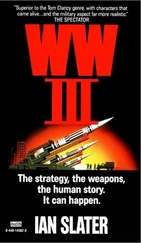“The new D-5 Tridents we took aboard at Holy Loch,” cut in Brentwood, “are a hundred and fourteen thousand pounds each. The C-4 Tridents were sixty-five thousand pounds each.”
Zeldman couldn’t see it. Nor could anyone else in Control. So what if you fired a deactivated missile? The tube still filled with water. Besides, wasn’t Brentwood telling him the D-5s, no higher at forty-four feet than the C-4s, which also rose two feet “proud” above the fairing of the forty-two-foot pressure hull, were almost double the C-4s’ weight? But then, with Sonarman Emerson’s voice telling them the second two Mark-48s were closing in on the next hostile torpedo coming at them just over seven miles away at a depth of 1,215 feet, Zeldman now realized what Brentwood had over an hour before. Though the D-5s were almost twice as heavy as the C-4s that they had replaced, when the D-5s were released, the volume of water replacing them would be insufficient in weight to make up for their loss. It meant that rather than the sub being required to increase its buoyancy, by having to pump out more water, as it would had it been firing the lighter C-4 missile, in the case of the D-5, the volume of water pouring into the tube would weigh less than the missile it replaced. This in turn meant the sub would actually become lighter after a D-5 firing and would naturally rise, the damaged ballast tanks not needed.
Overhearing the conversation between Brentwood and the executive officer, Sonarman Link still didn’t get it, but Emerson did, and it wiped away any umbrage Emerson had taken from Brentwood’s curt injunction to be quiet. Old “Bing” Brentwood was clearly a genius. There was no doubt in Emerson’s mind that if they survived the war, Robert Brentwood would become vice admiral in no time and probably, like JFK, would become president.
“Enemy torpedo destroyed!” announced Link matter-of-factly. “Hostile vessel still closing.”
At the hostile’s speed of forty-five miles per hour, it would be in very close range within eleven minutes, and by now its active radar would have confirmation that its target, the Roosevelt, was traveling at no more than five knots. The hostile hadn’t fired any more torpedoes, suggesting to Brentwood that it was now going to rely on its superior speed to outmaneuver its slow target. The Hunter/Killer would try to stop him reaching the hole, unless Roosevelt could increase speed and so buy time. Brentwood unclipped the hand mike.
“Torpedo firing control. Stand by for snapshot two. One.”
“Standing by for snapshot, sir.”
“Very well. It’ll come in a rush,” added Brentwood. “Minimum range — one mile.”
“Understood, sir. One mile.”
“Just keep him away from me,” intoned Brentwood.
“You give me the angle, sir,” repeated Torpedo Control, “and we’ll get ‘im.”
“Chief engineer?” called Brentwood.
“Sir?”
“Possible to turn our main prop at all?”
“Sir, it’s bent to hell and gone — it’d shake the guts out of her. Too much torque. In half an hour — maybe less — we’d have leaks popping up—”
“What can you give me?” Brentwood cut in. “Maximum, Chief?”
“Five and a half,” said the chief resignedly but not liking it. “Maybe six with the help of the current, but we’ll wake up every son of a bitch from here to the South Pole, Captain.”
“We’ve already done that, Chief. Give it a burl.”
“Hold on to your dentures,” the chief advised. “It’s gonna shake ‘em loose.”
It was an understatement, and as if that weren’t enough, a report came in that not only was the oxygen generator down, but no attempts could be made to bleed oxygen from reserve bottles because of damage sustained to their valve heads and regulators.
“Also,” the damage report seaman was shouting, above the bone-shuddering noise of the main prop, “oxygen and Freon gas scrubbers — closing down.”
“Very well — light candles!” shouted Zeldman as Brentwood hooked back into missile firing control verification procedures.
“I hope,” Brentwood yelled out to the weapons officer, “those tube liners can take a bit of vibration?”
“No sweat!” came the weapons officer’s report, his voice loud over the intercom, practically blasting the headphones off Brentwood, starting a throbbing, hot, needlelike pain in his left ear. The prop, though bent only a few thousandths of an inch, was turning the pressure hull into what felt like an unbalanced spin dryer out of control, the torque creating mayhem in the kitchen, where hamburgers became airborne, coffee shot from pots in marble-sized globules, the crew hanging on to every hold bar, nook, and cranny they could find, the men in Control buckled up while the OOD gripped the back of the planesmen’s chairs. But the chief, as chiefs were wont to do, lived up to his promise and delivered six knots, which together with the four knots of the emergency “bring it home” twin screws in the after ballast tank, were pushing Roosevelt at ten knots, chopping her ETA in the area beneath the hole from what was a minute ago twelve minutes to less than six, the burning of the perchoate candles mixing with the stench of sweat that was pouring out of the men. Emerson gave up on sonar echoes, the sub’s din overwhelming its hydrophone sensors.
After three more minutes, Brentwood shouted orders to stop all engines in order to take an active sonar pulse. Emerson’s screen showed the Hunter/Killer was now at eleven thousand yards.
“Any fish yet?” Brentwood asked Emerson.
“No, sir.” Brentwood estimated the Roosevelt would have to stop in another three minutes if he was to engage any torpedoes the attacking sub might fire, leaving him only three minutes to retaliate and hopefully blow the HUK’s torpedoes out of the water. He called for full speed ahead, and again they were assaulted by a kind of shaking none of them had ever known.
“Sir!” cried Emerson, alarming everyone who heard him. So ingrained were they with the idea of being quiet on the sub that despite the tremendous roaring of the ship itself, shouting in Control was a “noise short” violation, as alien and upsetting to them as any moral dilemma they could possibly imagine. Emerson was cupping his hands about his mouth. “… flow…”
Robert Brentwood leaned down, straining to hear Emerson’s words, but it was no use. Suddenly Emerson leaned forward, tapping swiftly on the computer’s keys, the screen reading, “Hole in ice has shifted — now above us.”
Brentwood shouted again for “stop engines,” someone shouting in the relative silence, “Thank Christ!”
“Where’s the hostile, Emerson?” asked Zeldman.
“Bearing zero four one, sir. Speed forty knots.” Brentwood gave the helmsman the order to bring about Roosevelt’s bow. On the screen they could see the Hunter/Killer had fired one more fish at sixty-nine hundred yards.
“Torpedo firing control. Stand by for snapshot two. One,” ordered Brentwood. “Angle on the bow zero seven.”
“Angle on the bow zero seven.”
“Shoot when ready.”
Final bearing and distance were given and Brentwood heard the firing control officer announcing, “Solution ready… weapons ready… ship ready… stand by! Shoot! Fire!”
Brentwood turned to Peter Zeldman. “Unravel the VLF. I want to be ready to receive the moment we surface.”
The planesmen were so tense, the OOD told them to take a deep breath, that it’d be okay. They weren’t comforted. This was definitely not by the book.
Brentwood told everyone to hang on, cautioning the crew that with the damage already sustained, they were unlikely to be able to slow her down much on the rise.
Читать дальше
